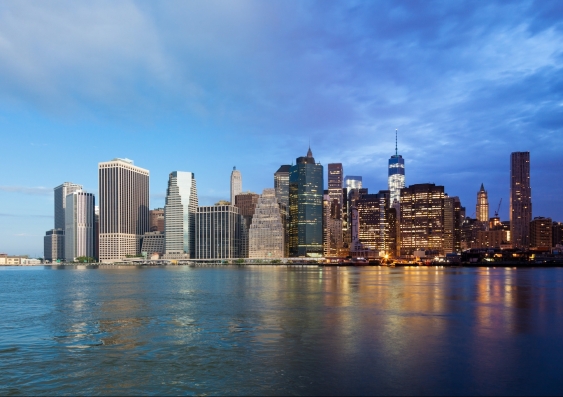Innovative building materials help moderate temperature year-round
The next generation of supercooling materials can help keep cities cooler in summer and warmer in winter.
The next generation of supercooling materials can help keep cities cooler in summer and warmer in winter.

Ben Knight
UNSW Media & Content
(02) 9065 4915
b.knight@unsw.edu.au
A team from UNSW Sydney has developed new intelligent building materials that can help keep the temperature in check throughout the seasons. The innovative design adjusts the optical properties used in conventional heat mitigation materials (coatings for buildings) to change the amount of heat they reflect and emit depending on the temperature in the air.
The new materials were designed by Scientia Professor Mat Santamouris, Anita Lawrence Chair High in Performance Architecture at the School of Built Environment, UNSW Arts, Design & Architecture. He says the new materials could be used worldwide in buildings to help better protect them from the elements.
“This is a smart, intelligent building material that understands the urban temperature, and it is modulated according to the weather conditions… so it is ideal for cities that have issues with overheating in summer, but also have heating requirements during winter,” Prof. Santamouris says.
Prof. Santamouris specialises in developing heat mitigation technologies and strategies that decrease urban temperatures in cities worldwide. Extreme urban heat is the most documented climate change phenomenon affecting more than 450 cities worldwide. Higher urban temperatures significantly increase energy consumption needs and adverse impacts on health, including heat-related morbidity and mortality.
His team recently tested the new generation of materials in Kolkata, India, in an international collaboration with colleagues from the University of Calcutta India, Public University of Navarra Spain and the University of Tsukuba Japan. The study is the latest in their ARC Discovery Project, Fluorescent Daytime Radiative Cooling for Urban Heat Mitigation, which aims to develop cooling technologies to mitigate urban overheating and reduce cooling energy demands in buildings.
While many conventional cooling materials help mitigate urban overheating during warmer periods, they’re not necessarily suitable for cities that have winter heating requirements. Furthermore, because the materials reflect light, they can generate glare, and can only be used in specific locations.
“Traditional supercool materials work by having very high reflectivity and emissivity, making them ideal for cities that only require heat mitigation. However, they can cause overcooling in cities that also need heating during cooler periods,” Prof. Santamouris says. “They also can’t be used in low-level streets or vertical façades because of the glare, so they can only really be used on roofs of high-rise buildings – not in walls or pavements.”
Prof. Santamouris’ team added new layers to the conventional supercooling materials to help modify their solar reflectance and emissivity during colder periods without compromising the cooling efficiency.
The first layer is composed of a ‘phase change’ material which uses transitional metal oxides to modulate the reflectivity and emissivity during the seasons. A second fluorescent layer then increases the cooling capacity of the material.
“We have integrated a new layer into the materials which changes the reflectivity and emissivity as a function of the ambient temperature,” Prof. Santamouris says. “We have also decreased the reflectivity of the materials to decrease glare by integrating [another] new layer that increases heat losses through fluorescence.”
“It’s an intelligent material that is adaptable to any climate, can be used at a low level, and can be of any colour, and does not create any glare.”
Fluorescent materials absorb solar radiation but immediately re-emit it as fluorescent radiation at a lower wavelength. Because the material can emit more than it absorbs, it compensates for the reflectivity loss and can be used without causing glare.
The result is a material that, during the summer, has a surface temperature below the ambient temperature, providing cooling to the building, and then much above the average temperature during winter, providing heating.
“In the recent study, we were not only able to overcome the overcooling issue, but we were able to decrease the peak summer ambient temperature up to five degrees and increase the peak winter temperature by 1.5 degrees,” Prof. Santamouris says.
Because the new materials rely less on reflectivity to reduce heat, they can also be used on any level of a building.
“It’s an intelligent material that is adaptable to any climate, can be used at a low level, and can be of any colour, and does not create any glare,” Prof. Santamouris says. “It is also durable, non-toxic, and will be affordable when produced at scale.”
Prof. Santamouris says the team will continue to test the materials in new locations around the world with a view to making the materials commercially available.
“This technology has the potential to be used in all cities worldwide, which would reduce energy costs and help combat the impacts of climate change.”